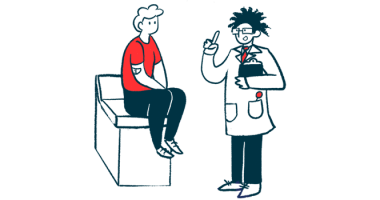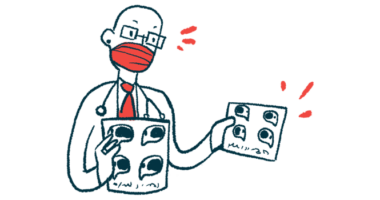Women more likely to develop new disorders after Cushing’s remission
Review in case of male patient showed more new disease diagnoses for women

Among people with Cushing’s syndrome who enter into remission, women appear to be more likely than men to develop certain new conditions, including autoimmune disorders, within one year.
That’s according to the findings of a systematic literature review done by researchers who reported on the case of a 42-year-old man who was diagnosed with sarcoidosis, an immune system disorder, one year after being surgically cured of Cushing’s syndrome.
In a report detailing his case and their review, the researchers noted that, in more than 80 cases of conditions arising following Cushing’s remission — including that man’s — about 85% of the patients were women.
Thyroid disorders were the most commonly observed, followed by sarcoidosis, a disease marked by the formation of small clumps of inflammatory cells, called granulomas, in different tissues and organs in the body.
The data also emphasize the need for clinicians to be aware of atypical symptoms, such as “skin changes, neurological symptoms, pulmonary symptoms and symptoms of thyroid disease, particularly if symptoms present or worsen” following the weaning of glucocorticoid replacement therapy, the team wrote.”
Their study, “Emergence of De Novo Conditions Following Remission of Cushing Syndrome: A Case Report and Scoping Review,” was published in the journal Endocrinology, Diabetes & Metabolism.
Man, 42, cured of Cushing’s syndrome with adrenal surgery
Cushing’s syndrome is a group of disorders marked by high levels of the hormone cortisol. In many cases, the condition is caused by a tumor in the brain’s pituitary gland that produces large amounts of adrenocorticotropic hormone (ACTH), which drive the adrenal glands located atop the kidneys to overproduce cortisol. In such cases, the condition is known as Cushing’s disease.
In rarer cases, tumors in the adrenal glands that produce large amounts of cortisol are the cause of the syndrome. Such cases are considered ACTH-independent forms of Cushing’s, because they are not driven by ACTH.
Because excess cortisol has a suppressive action in the immune system, Cushing’s remission can unveil or aggravate underlying inflammatory or autoimmune diseases.
In this report, a team of researchers at the University of Calgary, in Canada, described the case of a man diagnosed with new-onset sarcoidosis one year after his Cushing’s was cured by surgery.
The patient initially had been referred to the endocrinology department following a one-year history of insomnia and a weight gain of 18 kg (about 40 pounds). His medical history included a benign, non-cancerous lesion in the pituitary gland, which had been stable for more than 20 years.
Upon examination, he had high blood pressure and some of the typical signs of Cushing’s, including fat accumulation behind the neck and red streaks (stretch marks) on the abdomen.
Further tests showed he had elevated 24-hours urinary free cortisol levels, as well as increased late-night salivary cortisol. Conversely, his ACTH levels were undetectable. He was then diagnosed with ACTH-independent Cushing’s syndrome.
A CT scan revealed a mass in the left adrenal gland, and the patient was referred for surgery to remove it. While he waited for surgery, he received ketoconazole and spironolactone, which normalized his 24-hour urine cortisol level.
However, shortly after he started treatment, he experienced a tingling sensation, or paraesthesia, in his extremities.
Three months later, he underwent surgery to remove his left adrenal gland. He received temporary glucocorticoid replacement therapy and was discharged home on hydrocortisone.
Temporary glucocorticoid replacement therapy is used to prevent or treat adrenal insufficiency — a condition in which the adrenal glands fail to produce enough of certain hormones.
Hydrocortisone was tapered within two weeks after surgery, but the patient went on to develop muscle stiffness in his shoulders, along with joint stiffness and muscle pain, and worsening paresthesia.
Four months after surgery, he further reduced his hydrocortisone dosage, which eased his Cushingoid features.
Patient’s sarcoidosis diagnosis led to review of new disorders after remission
One year later, with an even lower dosing of hydrocortisone, the man continued to feel unwell and began having headaches, muscle weakness, and morning stiffness.
Blood work conducted after withholding glucocorticoids for one day revealed his cortisol levels were below the normal limit. A chest X-ray revealed an enlargement in several lymph nodes.
Further tests confirmed he had pulmonary sarcoidosis, a condition in which granulomas form in the lungs, which ultimately can drive inflammation and scar tissue formation (fibrosis) that affect lung function. However, his lung function was normal and he had no signs of sarcoidosis outside the lungs.
His hydrocortisone dose was increased to 20 mg daily, which eased his symptoms.
After two years, the patient was weaned off glucocorticoid replacement therapy with no signs of adrenal insufficiency. His sarcoidosis also remains in remission.
Women comprised 85% of patients diagnosed with new disorders within 1 year
The researchers then conducted a systematic review of published studies across four databases reporting on the onset of other conditions following Cushing’s remission.
A total of 43 studies reporting 84 unique cases of new-onset conditions — including the case of the 42-year-old man they described — were identified.
The patients had a median age of 39.5 years, but slightly more than 85% of them were found to be women.
“The majority of cases were female, which is in keeping with the epidemiology [information on how often and why a disease occurs] of Cushing syndrome as well as of autoimmune disease in the general population,” the researchers wrote.
More than 20 conditions were identified following Cushing’s remission. The most common included thyroid disorders, found in 48.8%, followed by rheumatologic disorders, seen in 26.2%. Among those disorders was sarcoidosis, found in 15.5% of patients.
The median time between Cushing’s remission and the onset of a new condition was 4.1 months, the data showed.
Also, more than half of the patients (59.5%) were being treated with a corticosteroid at the time of disease onset.
Overall, these findings highlight the need for clinicians to remain vigilant for symptoms in Cushing’s patients who enter in remission, “particularly in the first year following the treatment,” given that these “may be manifestations of a wide range of conditions,” the team wrote.









